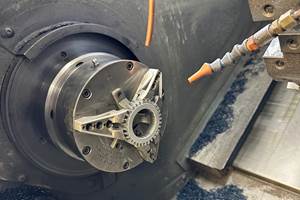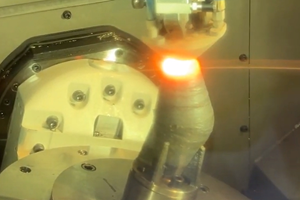Maintaining Balance Writing about Modern Machining, Manufacturing
There is a method to our madness when it comes to determining what articles to present to our readers.
Share





Choosing what topics to write about for ¸ßĹâÂĘÁůşĎ˛Ę is all about maintaining balance.
One reason is that ¸ßĹâÂĘÁůşĎ˛Ę is a horizontal brand, not a vertical one. That means we have to cover a range (rather than a small niche) of machining technology, equipment and processes that shops might apply to grow their businesses and become more efficient, capable and profitable. To ensure we present such a well-balanced smorgasbord of stories, we create a yearly editorial calendar that identifies specific topics we must cover in each month’s print issue. This discipline keeps us from writing about the same few concepts over and over, and it enables us to bring fresh ideas to your attention that could help your operation. In this way, our magazine continues to be a means for discovery, spurring you to research topics you learned about that piqued your interest.
The other part of our balancing act is presenting the right mix of articles that introduce leading-edge, possibly unfamiliar technology as well as those that highlight the real-world application of new or known machining equipment and strategies. Both kinds of stories are designed to help you improve your manufacturing business, whether it is something you can implement now or consider for the future.
Let’s first consider the former type of article. I believe I was the first ¸ßĹâÂĘÁůşĎ˛Ę editor to write about the promise of additive manufacturing/3D printing in a production (not prototyping) sense back in 2011. That article described a manufacturer’s experimental efforts printing contoured, high-temperature-polymer aircraft duct components. Was it an interesting story to research and write? Absolutely. Was I a smidgen uncomfortable that it was a cover story? Absolutely.
I certainly thought readers would find the story intriguing. At the same time, I secretly wondered if this technology would ever be something that they would, at some point, leverage to their advantage in a tangible, beneficial way. After all, the company I profiled was not actually using it in a proven production process or in some way outside of prototyping.
But flash-forward to today. Recent ¸ßĹâÂĘÁůşĎ˛Ę issues have described machine shops benefiting from 3D printing beyond prototyping by creating fixturing, robot end effectors, parts trays and other shopfloor widgets. In fact, this story describes a shop that 3D prints plastic workpiece fixtures rather than having its toolroom produce them out of metal.
That’s why I had to check myself when I noticed how often the promise of artificial intelligence (AI) was mentioned in without citing real-world examples of it being applied in an actual shop. Our cover story describes a company’s efforts combining AI with sensor technology to enable industrial robots and humans to interact collaboratively on the shop floor sans protective fencing. Another story describes how AI is being used to predict when a machine tool’s spindle will start to fail, while still another explains how AI facial recognition technology can ensure only certain operators are permitted access to a machine’s CNC.
AI is an example of new technology we have recently come across in our travels, technology that is likely coming to a shop near you (or to yours) at some point. Who knows, maybe one day we’ll describe how your shop is applying AI in a way that you learned about here.
Still, I wonder. What other new technology will we be bringing to your attention in the years to come? Time will tell.
Related Content
Chuck Jaws Achieve 77% Weight Reduction Through 3D Printing
Alpha Precision Group (APG) has developed an innovative workholding design for faster spindle speeds through sinter-based additive manufacturing.
Read MoreOEMs Showcase Hybrid Manufacturing Applications
Mazak and Mastercam worked together to demonstrate the viability of hybrid additive/subtractive machining techniques at a recent event held in Florence, Kentucky.
Read MoreAdditive/Subtractive Hybrid CNC Machine Tools Continue to Make Gains (Includes Video)
The hybrid machine tool is an idea that continues to advance. Two important developments of recent years expand the possibilities for this platform.
Read MoreDigitalization and Done-In-One Reign Supreme at BIEMH 2024
European manufacturers may have a different balance of markets than their U.S. counterparts, but the practical challenges they must overcome are often similar — as are the solutions.
Read MoreRead Next
AI Makes Shop Networks Count
AI assistance in drawing insights from data could help CNC machine shops and additive manufacturing operations move beyond machine monitoring.
Read MoreAMRs Are Moving Into Manufacturing: 4 Considerations for Implementation
AMRs can provide a flexible, easy-to-use automation platform so long as manufacturers choose a suitable task and prepare their facilities.
Read MoreMachine Shop MBA
Making Chips and ¸ßĹâÂĘÁůşĎ˛Ę are teaming up for a new podcast series called Machine Shop MBA—designed to help manufacturers measure their success against the industry’s best. Through the lens of the Top Shops benchmarking program, the series explores the KPIs that set high-performing shops apart, from machine utilization and first-pass yield to employee engagement and revenue per employee.
Read More






















